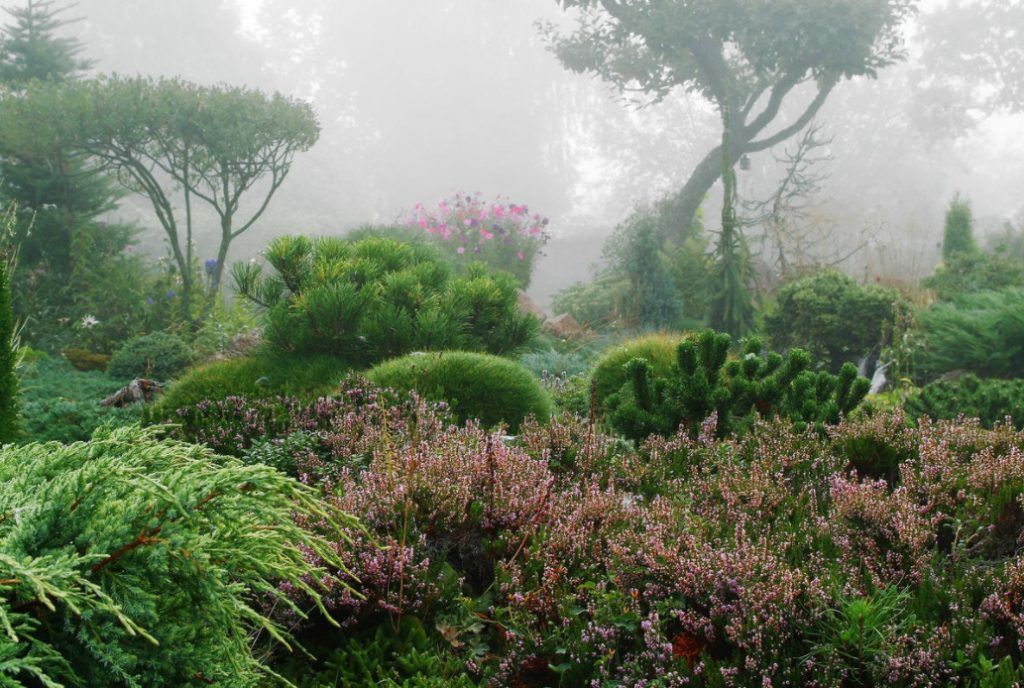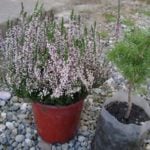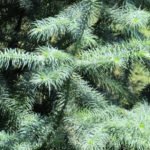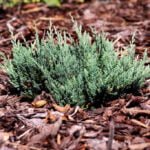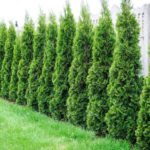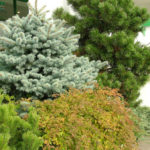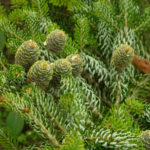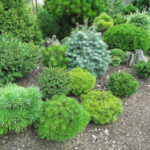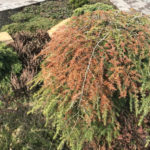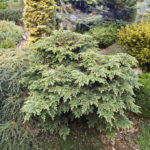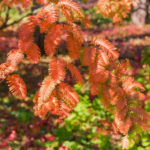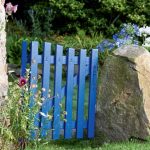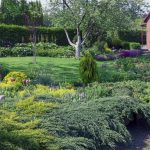When purchasing new coniferous trees, we strive to create a cozy garden or at least a harmonious composition with their help. But conifers do not grow by themselves, as in the exhibition, they need suitable companions, next to which they will show their wonderful decorative properties and create a natural landscape that is pleasant to the eye.
Modern gardeners, who have “reached” the dizzying list of available rarities, are trying to pack the entire range into the area of a small garden plot. They can not be blamed for this-the pleasure of owning “new curiosities” often relegates to the background the essence of the garden-a place for understanding harmony with yourself and with nature.
Of course, gardening is a creative process, and every composition has the right to exist. But still, you must agree, there are self-sufficient coniferous compositions that” for some reason ” preserve their naturalness for many years — such gardens can grow without constant adjustments, only small touches indicate that this beauty is not complete without human intervention. The reason is that many combinations of plants were observed by our ancestors for thousands of years and are stored in our genetic memory as standards of natural harmony and beauty. Subconsciously, we compare these fragments with those created by man, and note dissonances or, on the contrary, successful solutions.
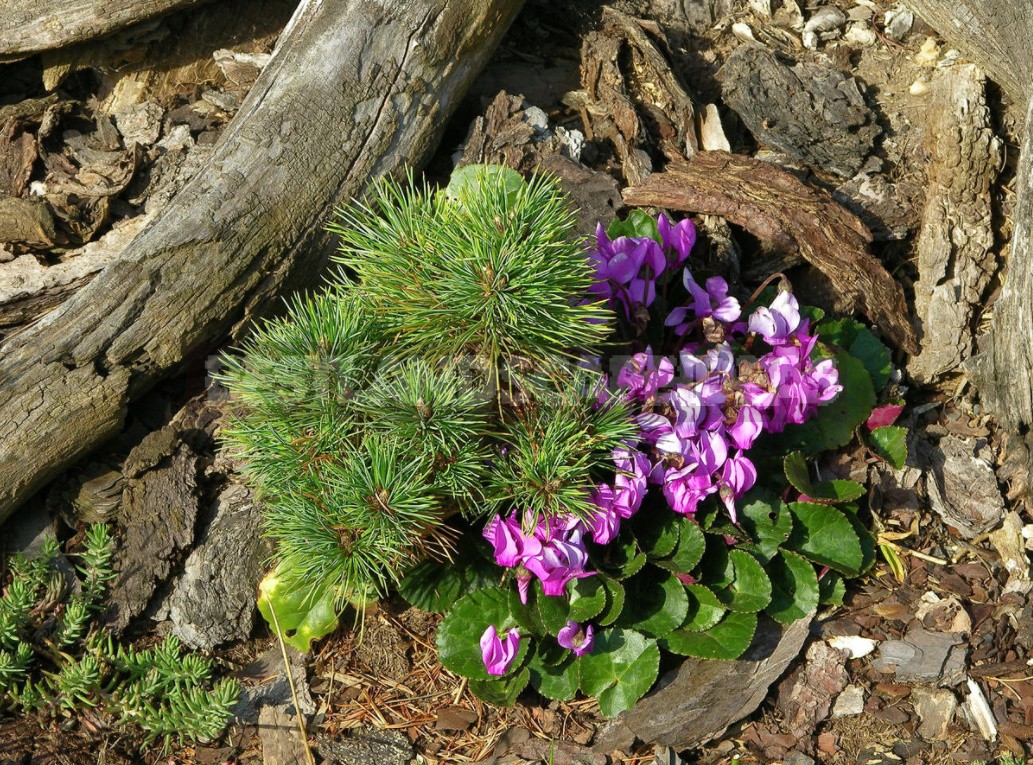
That is why I recommend that gardeners who want to create and improve, travel more often. This gives food for landscape imagination, develops taste and confidence in what exactly you want to create on your site.
Paintings of the highlands
Since our garden plots are very different, everyone can try to recreate a coniferous area that resembles a landscape seen in nature, and complement it with their own finds. For example, a completely open area can be turned into a fragment of a mountain landscape.
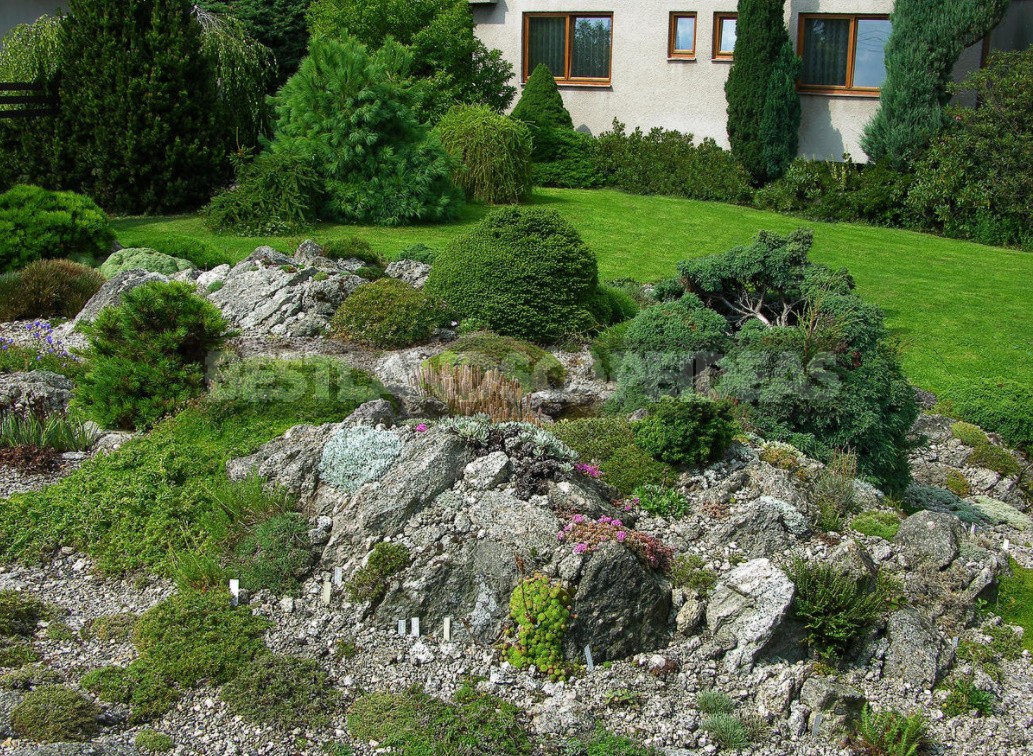
As you know, in the highlands you can find fantastic and exquisite landscapes: coniferous trees cannot develop into full-fledged trees due to winds, avalanches and cold at high altitude, on the contrary, they turn into elegant low plants in the bonsai style.
The General background of such landscapes is certainly a stone – there should be a lot of it, and it should not look like a “pile” in the corner of the site – this is the most common mistake when building a rock garden. In the mountains, stones are “scattered” over a large area, even if fragmentary. Therefore, if you decide to approach the mountain landscape, it is a good idea to create a rock garden with several peaks or several remote rocky hills with separate intersperses of large stones between them for visual communication.
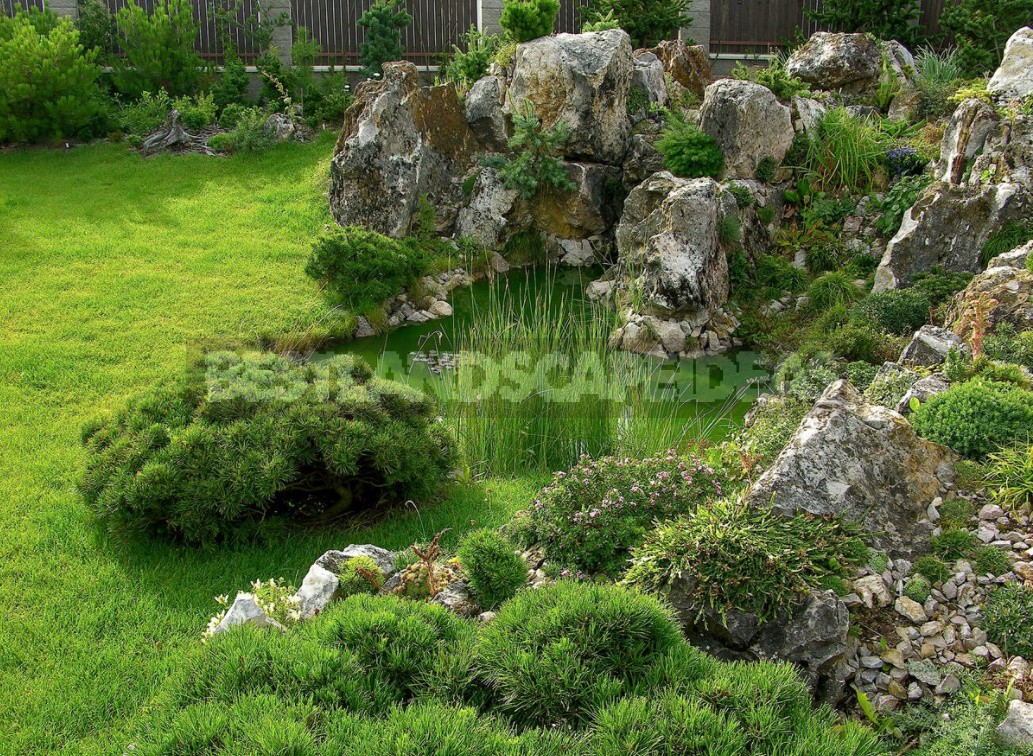
In nature, such stones (scree) often contain pillow-shaped plants, low hummocks of cereals, small rosettes of flowering Campanula or primroses, creeping shrubs. Here is the answer to the question whether it is possible to plant a Lily on a rock garden. You can, but it doesn’t happen in nature. It is more correct to use plants that are close in physiognomic appearance to mountain plants.
It will also be useful to cut under the “hummock” of all shrubs and perennial garden plants, this will add naturalness to the created landscape. For an impromptu mountain landscape, you can use any of the dwarf conifers.
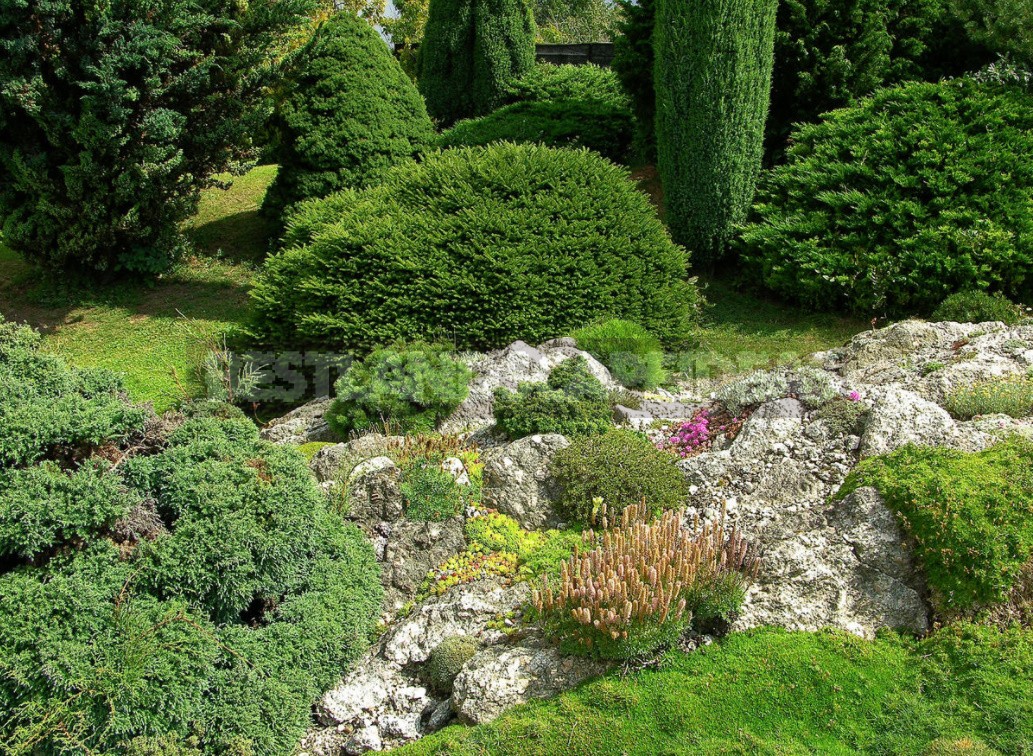
A hedge of thuja, fir and juniper trees, or of trimmed deciduous shrubs can be a backdrop for the mountain landscape. In addition, a good background will be a monotonous plastered wall of a house or outbuilding in white color, associatively it is perceived as snow in the mountains. The white color highlights the beauty of the rocky landscape in front of it.
Based on the harsh Northern nature
Another type of open landscape is the Northern views-coastal rocky valleys and Islands with rare pines or junipers, called “alvars”. Those who were in Norway, the harsh Islands beyond the Arctic circle, remained forever captivated by the exquisite beauty and grandeur of Northern nature.

It is possible to repeat such landscapes with a large amount of stone (ideally-angular dark gray granite), moss will replace groundcover plants, creeping shrubs, small-leaved rhododendrons and other low-growing Heather plants are ideal.
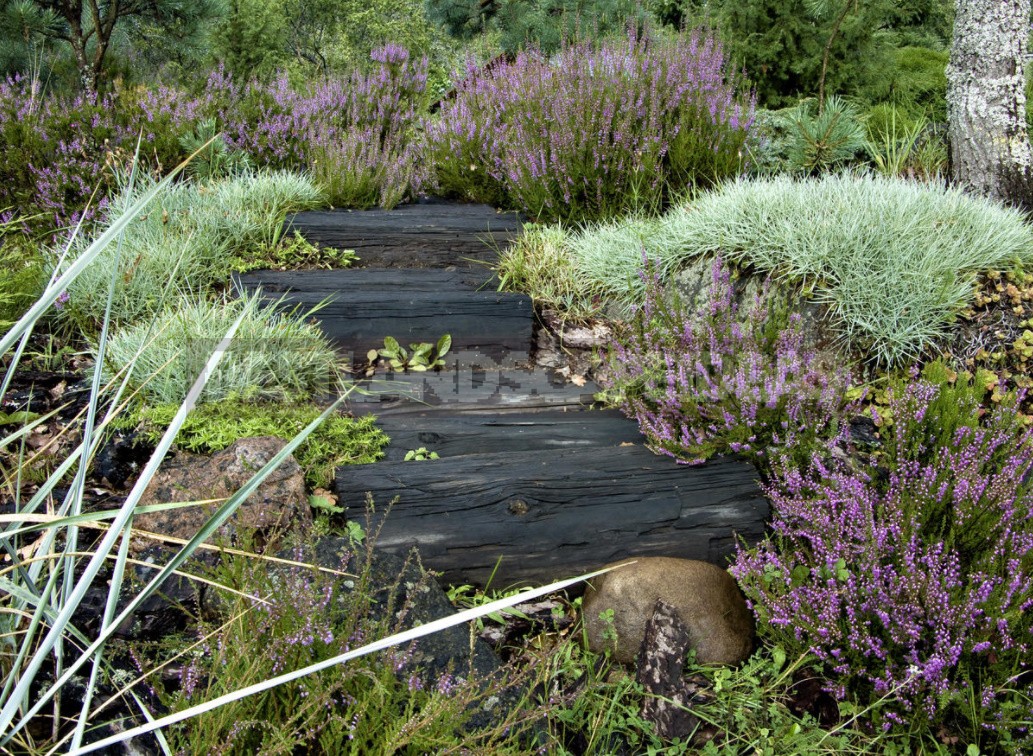
The picture will be complemented by profusely blooming spots of groundcover plants, as well as bright spots of low perennials. Unlike Alpine landscapes, in the “Northern” gardens, you can also use columnar coniferous trees-junipers, thuja, cypress trees – these are the landscapes with single candles of junipers against the background of stone found in the North.
The picturesque forest area
Owners of plots with already growing large coniferous trees should pay attention to forest landscapes, especially those where trees grow relatively rarely and under them there is a sufficiently illuminated litter suitable for the growth of shrubs. The most picturesque places are located in the mountains on the border of the forest belt. In this area, the graphics of tree trunks and large boulders are well combined, sparse vegetation – evergreen rhododendrons, small openwork shrubs.
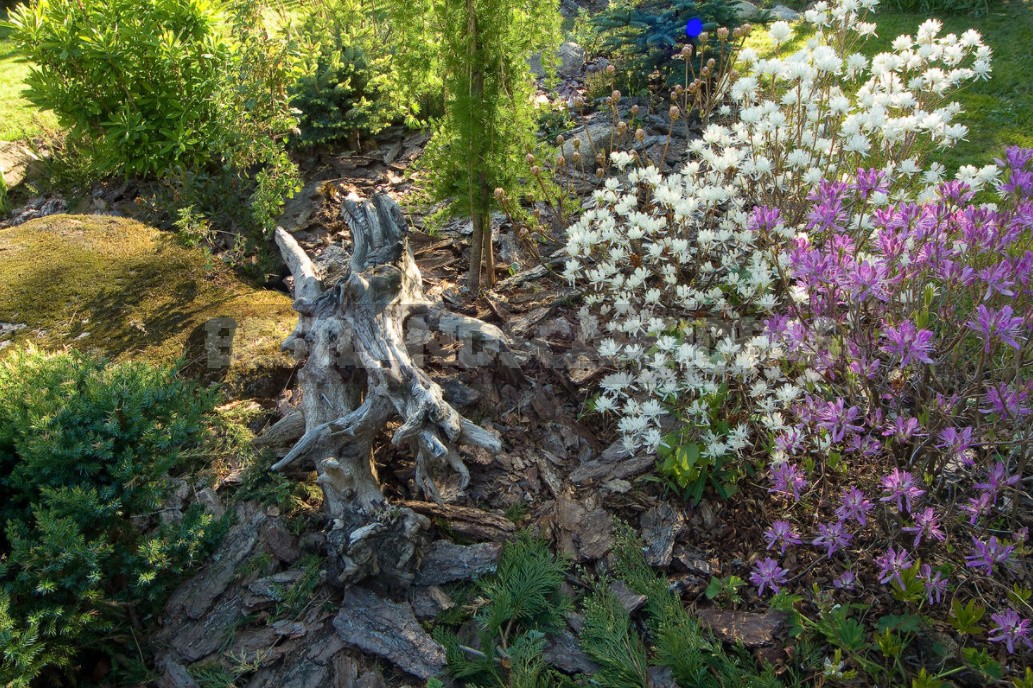
Creating a garden landscape, you want to feel a certain mystery in it, so that there is some mystery in the air. Walking through the forest, notice the corners that are particularly attractive for their unusual nature, which find a response in your soul.
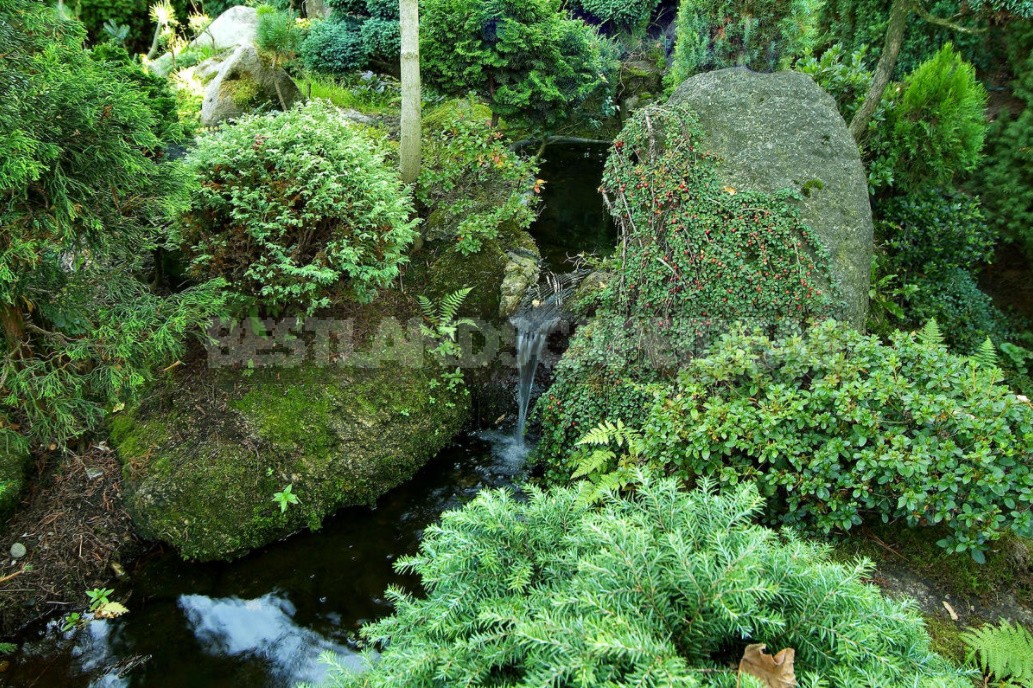
Look, for example, at a dead spruce forest with a bed of solid layer of fallen needles. If large fir trees grow on the site, then nothing prevents you from using this technique: with the help of modern mulching materials, it is not difficult to recreate such a thing. And if you add plants similar to those that were once seen in the forest, you will get a wonderful natural corner.
Ferns, daphnes, Hepatica, orchids – these are the perfect companions of the spruce corner. To give the forest composition a natural dullness, attach a mossy stump or snag under the spruce paw. A small pool or swamp will be the last point to complete this composition.
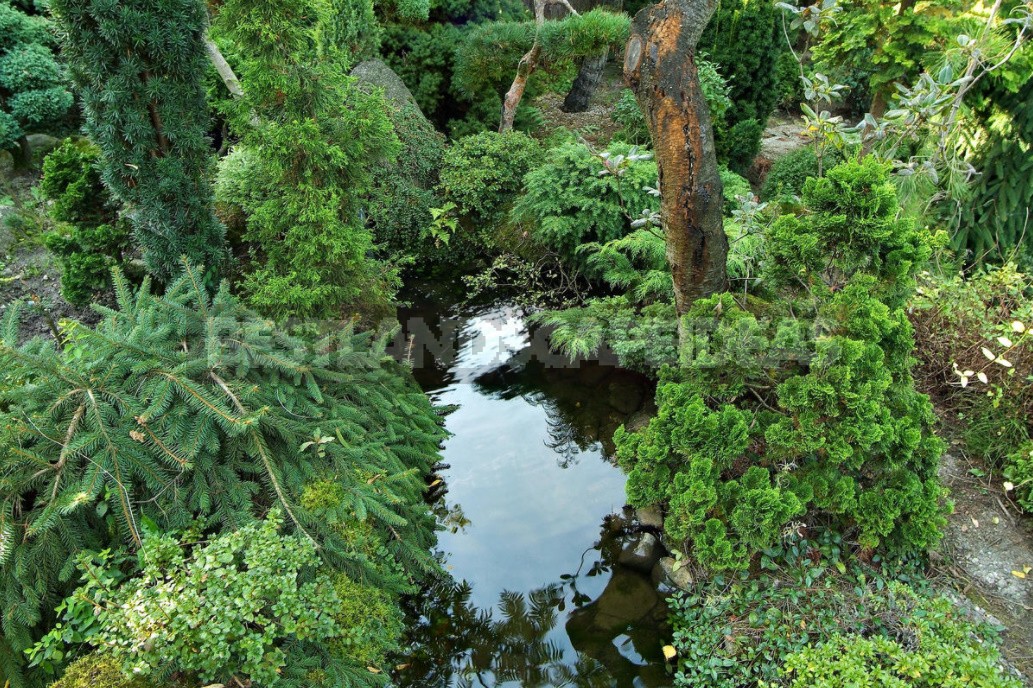
Large trees and moist soil are another matter – as happens along the banks of forest streams. Here the gardener is given the opportunity to use the entire huge range of plants for the shade garden-hosts, astilbes, geyheres, ferns, hoof, Caltha…
In such a forest garden, in the shade of tall coniferous trees or near a quietly murmuring stream, a person will find the peace and solitude that he lacks, a refuge from the daily hustle and bustle.
